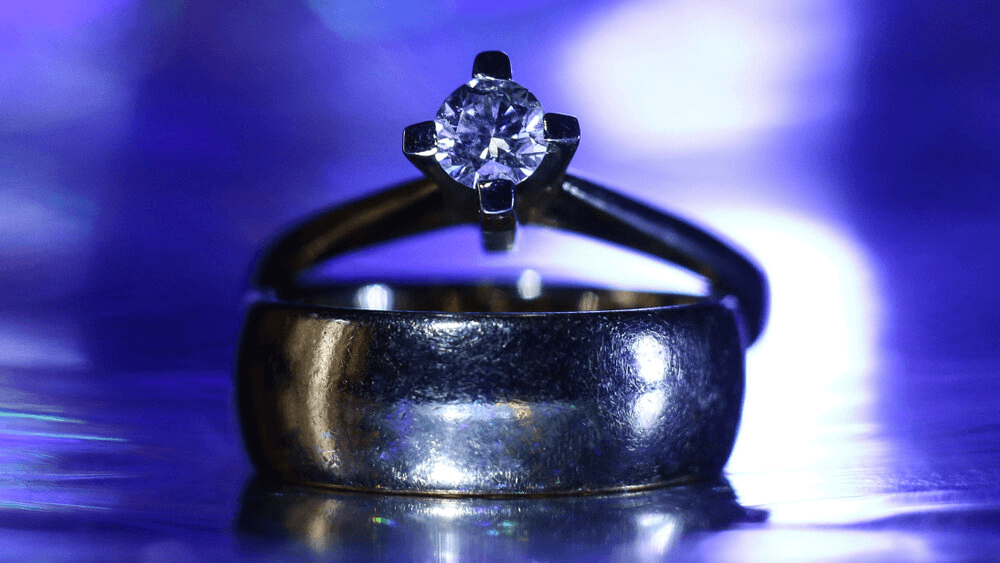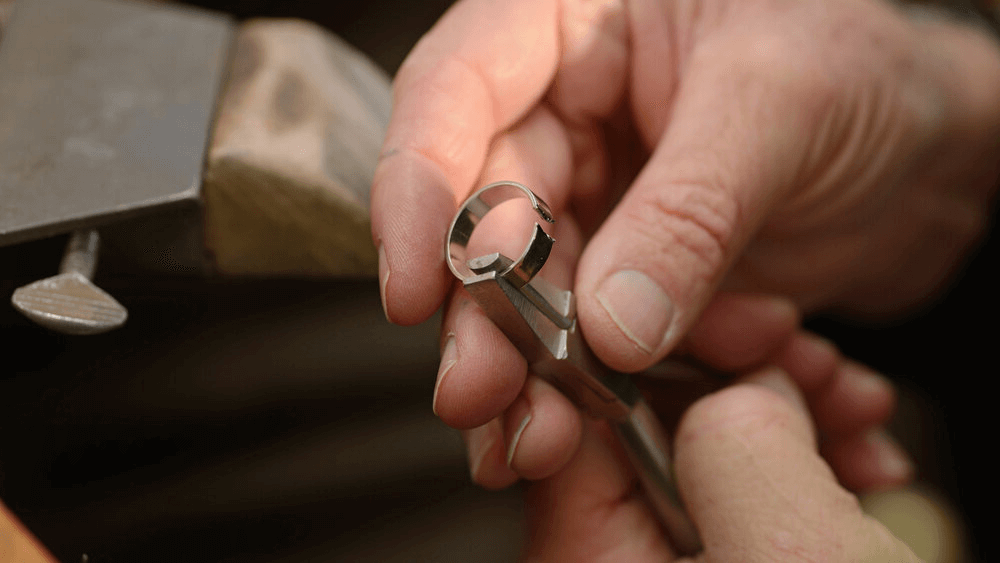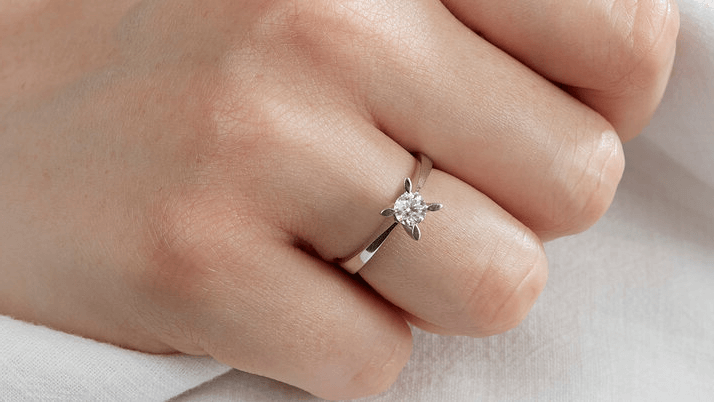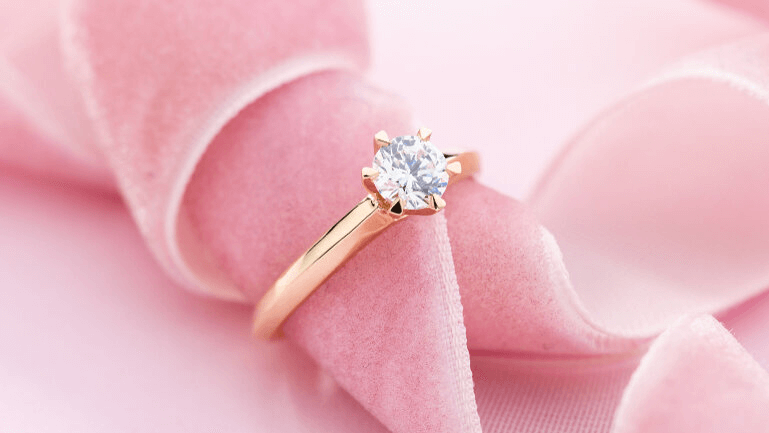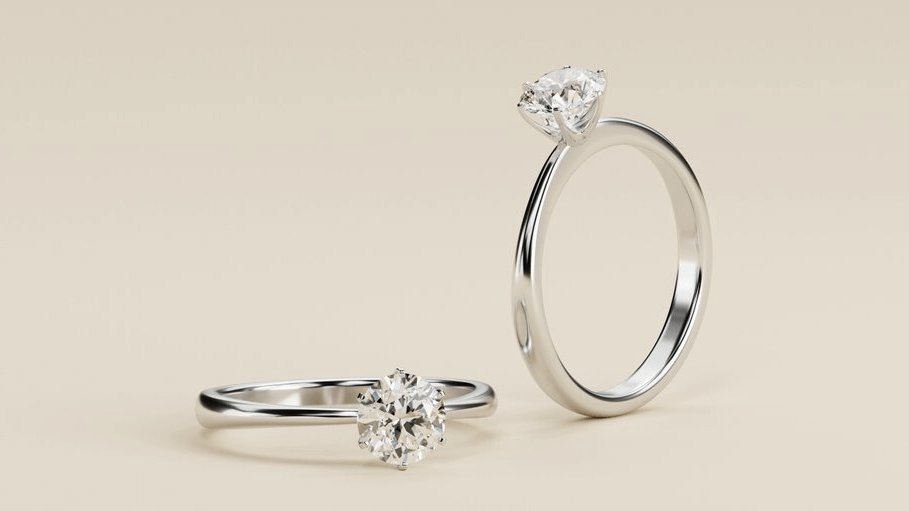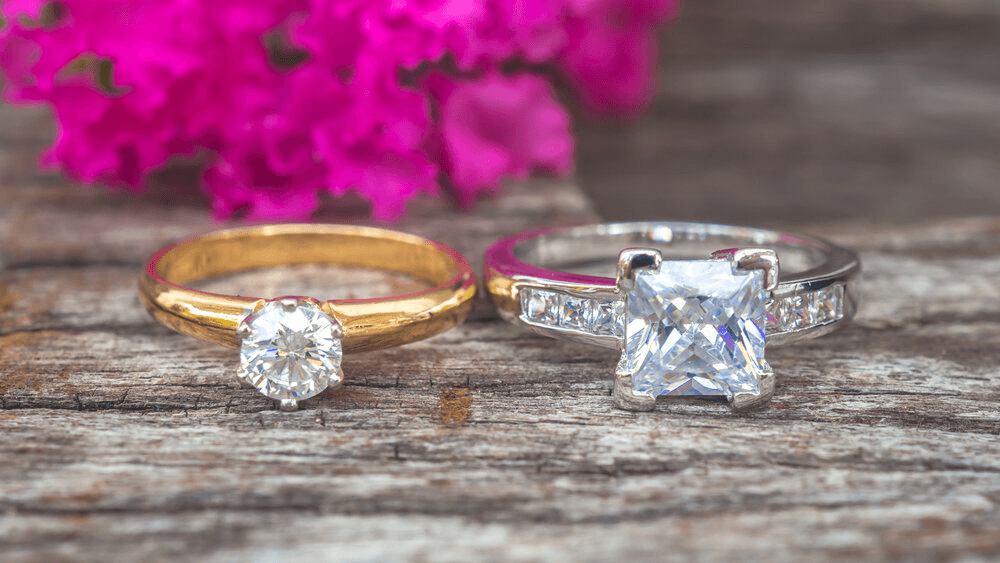Karat vs Carat: Uncover What Jewelers Don’t Want to Reveal!

By Gary A.

Edited by Olivia H.
Published Aug 13, 2024
Edited on Dec 17, 2024
When it comes to engagement rings, understanding the difference between karat and carat is crucial for making a choice that truly reflects your love and commitment. Dive into our expert guide to uncover what jewelers might not want you to know!

Navigate this guide:
- 7 Quick Tips for Understanding Karat vs Carat
- Introduction
- Deciphering Diamond Weight: The Magic of Carats
- Gold Purity Unveiled: Navigating Through Karats
- Our Expert Take
- 10 Frequently Asked Questions: Karat vs Carat
Before we dive deeper into the specifics of Karat vs Carat, here are some practical tips to help guide your decision-making process.
7 Quick Tips for Understanding Karat vs Carat
Choosing the Karat (Gold Purity):
- Understand the Karat System:
- Gold purity is measured in karats, with 24-karat being pure gold. However, pure gold is soft and can be prone to damage. The karat number tells you how many parts out of 24 are pure gold. For example, 18-karat gold is 18 parts gold and 6 parts other metals.
- Consider Durability:
- The higher the karat, the softer the gold. For everyday wear, like engagement rings, 14-karat or 18-karat gold is often recommended. They offer a good balance between purity and strength.
- Pay Attention to Color:
- The type and percentage of alloy metals mixed with gold can affect its color. For instance, more copper results in a redder hue, leading to rose gold. Decide if you want a traditional yellow gold, a more neutral white gold, or the pinkish hue of rose gold.
- Check for Hallmarks:
- Genuine gold jewelry will have a hallmark stamped on it, indicating its karat (e.g., 14k, 18k). Always check for this stamp to ensure you’re getting the purity you’re paying for.
Choosing the Carat (Diamond Weight):
- Carat Doesn’t Equal Size:
- Remember that carat refers to the weight of the diamond, not necessarily its size. Two diamonds can have the same carat weight but appear different in size based on how they’re cut.
- Balance Carat with Other Cs:
- While carat weight is important, also consider the other three Cs: cut, clarity, and color. A slightly smaller diamond with a better cut or clarity can often look more brilliant than a larger one with poor characteristics.
- Set a Budget:
- Decide on a budget before shopping, and remember that you don’t always need to go for a full or half-carat (e.g., 1.0 or 0.5). Choosing a diamond just shy of these common weights (e.g., 0.9 or 0.45) can offer a similar look but at a reduced price.
Now that you’ve got these practical tips, use Jeweler AI below to find the perfect engagement ring that suits your style and budget:
Introduction
Gold and diamonds – two of the finest things in life, and two important ingredients for almost any engagement ring (unless, of course, you’re opting for platinum).
Gold and diamond are highly complementary of one another, but they’re also very different. Why, then, do jewelers (seemingly) use the two terms interchangeably?
The Romance of Diamonds and Gold
Diamonds are the obvious choice for an engagement ring. They are ancient, stronger than any other natural substance on earth, beautiful and highly coveted around the world – as they have been for thousands of years of human history.
Gold shares a similar origin story. Valued for most of human history, gold is an ancient and relatively rare substance produced deep underground by the raw forces of nature.
Both represent enduring, once-in-a-lifetime love better than anything else we can think of…
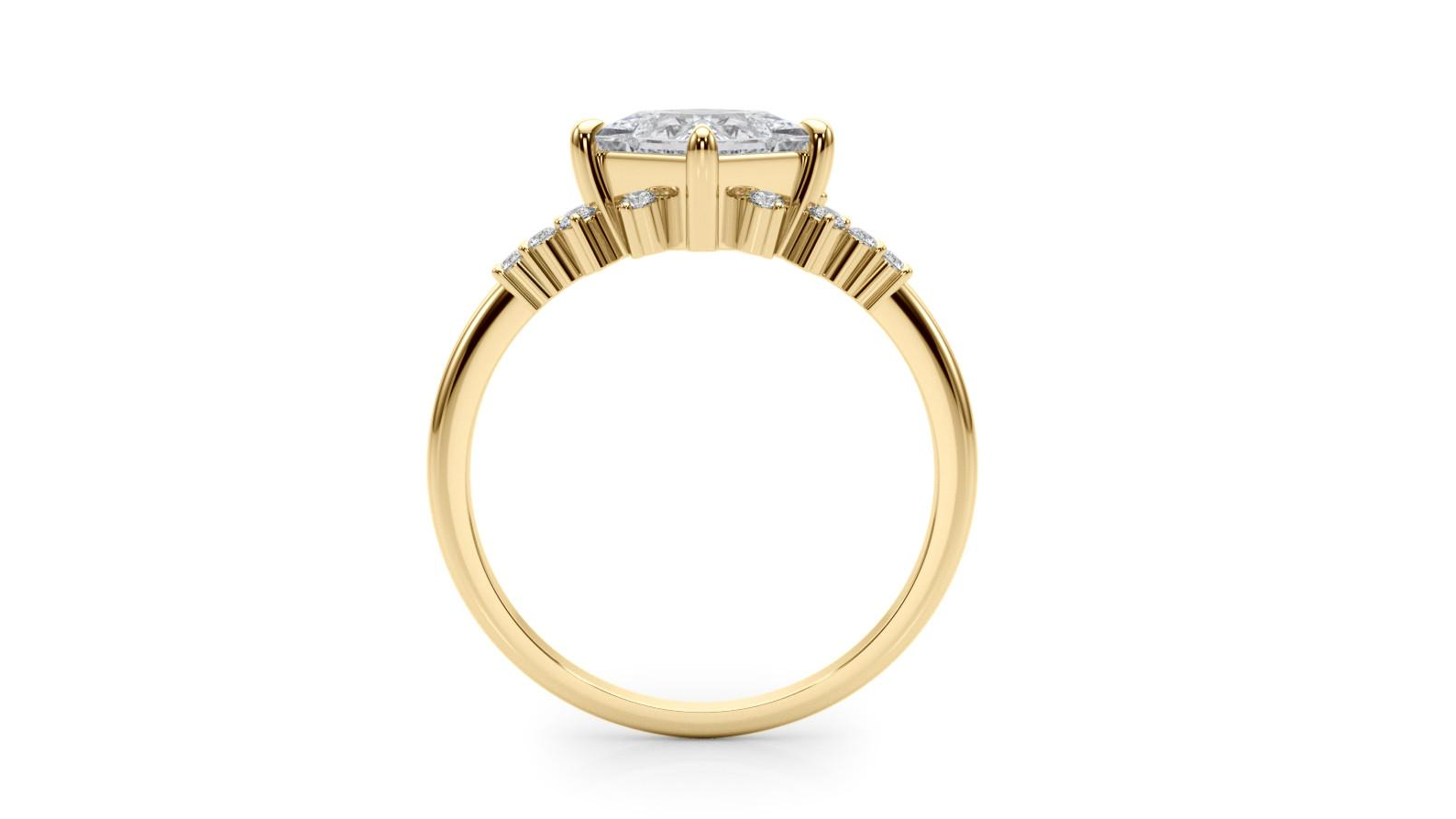
Understanding Your Jewelry’s Value: Karat vs Carat
When you’re thinking about financial value, you’ll want to understand both karat and carat. Karat is used to refer to the purity of gold – and purity has a major impact on the value of a piece of gold jewelry. Jewelry with a higher gold content inevitably costs more.
Carat is a measure of diamond weight. Heavier diamonds are worth significantly more than lighter-weight (and, accordingly, smaller) diamonds. Carat will represent the most significant factor behind the price of your diamond.
Deciphering Diamond Weight: The Magic of Carats
Carat is used for more than just diamonds, although diamond is the most noteworthy gemstone to which it applies.
What Does Carat Really Mean?
Carat is the same as 0.2 grams. A lot of people don’t realize that diamonds are pretty lightweight and that the national average carat weight used in engagement rings is not even half a gram.
How Diamond Carat Affects Price and Appearance
As carat size increases, so does value – but not in a simple, linear way. 2 carat diamonds are much rarer and more revered than 1 carat diamonds (and so on), and that means that you can’t just double-up on your money and hope to get a stone twice as big.
You can read our full guide to carat and diamond value here.
Balancing Carat with Cut, Color, and Clarity
Carat is a very important consideration, but it’s not as simple as saying, “I can afford to get a diamond this big’.
Other factors influence a diamond’s value – most notably, the rest of the Four Cs: color, clarity, and cut.
Getting the biggest diamond possible for your budget would mean sacrificing those other benchmarks of quality – and you definitely don’t want to do that. Size isn’t everything, and that’s certainly true in the world of diamonds.
Opting for a smaller diamond with better clarity, color, and cut is the key to making a good investment. You don’t need to get the best of everything – for instance, getting good clarity doesn’t mean settling with one of the top grades – but you do need to take them into account.
Gold Purity Unveiled: Navigating Through Karats
Pure gold is too soft for fine jewelry – unless it’s only intended to be worn a handful of times, and for very select occasions. Almost all gold jewelry you will encounter in your life will be ‘impure’, with the karat lowered from 24 (pure) to a number like 18K, 14K, or even lower.
The Essence of Karat in Gold Jewelry
So, the easiest way to think of karat is as a measure of purity. 24K is pure gold, and anything below that pertains to gold with alloying metals like platinum and copper. 18K gold holds a ratio of 18:6, while 14K gold has a ratio of 14:10 – in both cases, you get more gold than alloy, but you get significantly more in 18K than in 14K.
Color and Composition: Understanding Gold Alloys
Gold is naturally yellow – both white and rose gold are made by mixing the right alloys to influence the metal’s color.
Pure gold is a very deep, vibrant yellow. As more alloys are added, that yellow becomes softer and, admittedly, more wearable. It appears less saturated and suits fine jewelry better in most cases.
Rose gold’s pinkish hue is obtained through alloys like copper and silver. Unlike yellow gold, rose gold actually grows more vibrant at lower karat types, since the metals that give it that rosy color are in higher concentration.
With white gold, the higher concentration of alloying metals is a perk, since it achieves that clear, crisp, white hue shoppers are looking for.
Choosing the Right Karat for Your Lifestyle
A lower karat offers more security to the ring since alloyed gold is stronger. If you’ve got a particularly active lifestyle, you’ll want to consider a lower karat type, but, for most people, the choice will be between 14K and 18K. While 10K and 12K gold both have their merits, the ratio is a little too off for most people, with more alloy than gold. The color is impacted quite severely, so that distinctively rich hue of gold appears washed out and pale.
You can read our full guide to 14K vs 18K gold here.
Matching Diamond Carat and Gold Karat for Your Ring
There really are no rules or ‘ideals’ when it comes to matching diamond carat with gold karat.
The bigger your diamond, the more you’ll want to pay attention to the strength and durability of your ring – although picking an engagement ring that is designed to withstand the test of time is just as important whether you’ve bought a 0.5 carat diamond or a 10 carat diamond. Don’t go for a karat type any higher than 18K, since you can’t be sure it won’t start to take on damage – or work loose around your diamond.
Our Expert Take
Ultimately, gold karat and diamond carat come down to your budget – what you feel able to pay, and what you’re willing to sacrifice for higher purity or bigger diamond size. It’s vital that you understand the difference between the two since both require your attention before you seal the deal on your engagement ring.
10 Frequently Asked Questions: Karat vs Carat
- Q: What is the difference between karat and carat?
- A: Karat (with a “K”) refers to the purity of gold and indicates the proportion of gold in an alloy out of 24 parts. So, 24-karat gold is pure gold. Carat (with a “C”) measures the weight of diamonds and other gemstones, with one carat equaling 0.2 grams.
- Q: Can karat be used to measure diamonds?
- A: No, karat is specifically used to measure the purity of gold. Diamonds and other gemstones are measured in carats.
- Q: Is higher karat gold better?
- A: Higher karat gold has a greater proportion of gold, making it more valuable but also softer. The “best” choice depends on your preference for purity versus durability.
- Q: What does 18-karat gold mean?
- A:18-karat gold means the metal is 18 parts gold and 6 parts other metals (totaling 24 parts), making it 75% pure gold.
- Q: Does a higher carat diamond mean it’s better?
- A: A higher carat indicates a heavier diamond, but it doesn’t automatically mean it’s better. Other factors like cut, clarity, and color also significantly impact a diamond’s appearance and value.
- Q: Why is carat important in diamonds?
- A:Carat weight is a key factor because it directly influences the size and, consequently, the visual impact and value of a diamond.
- Q: What’s the difference between 14k and 18k gold?
- A:14k gold is made of 14 parts gold and 10 parts other metals, making it 58.3% gold. 18k gold is 18 parts gold and 6 parts other metals, totaling 75% gold, making it purer and more valuable but softer than 14k gold.
- Q: Is 24-karat gold too soft for jewelry?
- A: Yes, 24-karat gold is pure gold and is very soft, making it prone to scratching and bending. It’s not typically recommended for everyday wear jewelry.
- Q: How can I tell the carat weight of a diamond?
- A: The carat weight of a diamond is usually provided by the seller and can be found on the diamond’s certificate of authenticity. For an existing piece, a jeweler can measure it using specialized scales.
- Q: Are carat and karat interchangeable terms?
- A: No, they refer to different measurements; carat for gemstone weight and karat for gold purity. They are not interchangeable.
Discover your perfect ring with Jeweler AI – Where karat meets carat seamlessly.
FOLLOW-UP GUIDE SERIES

